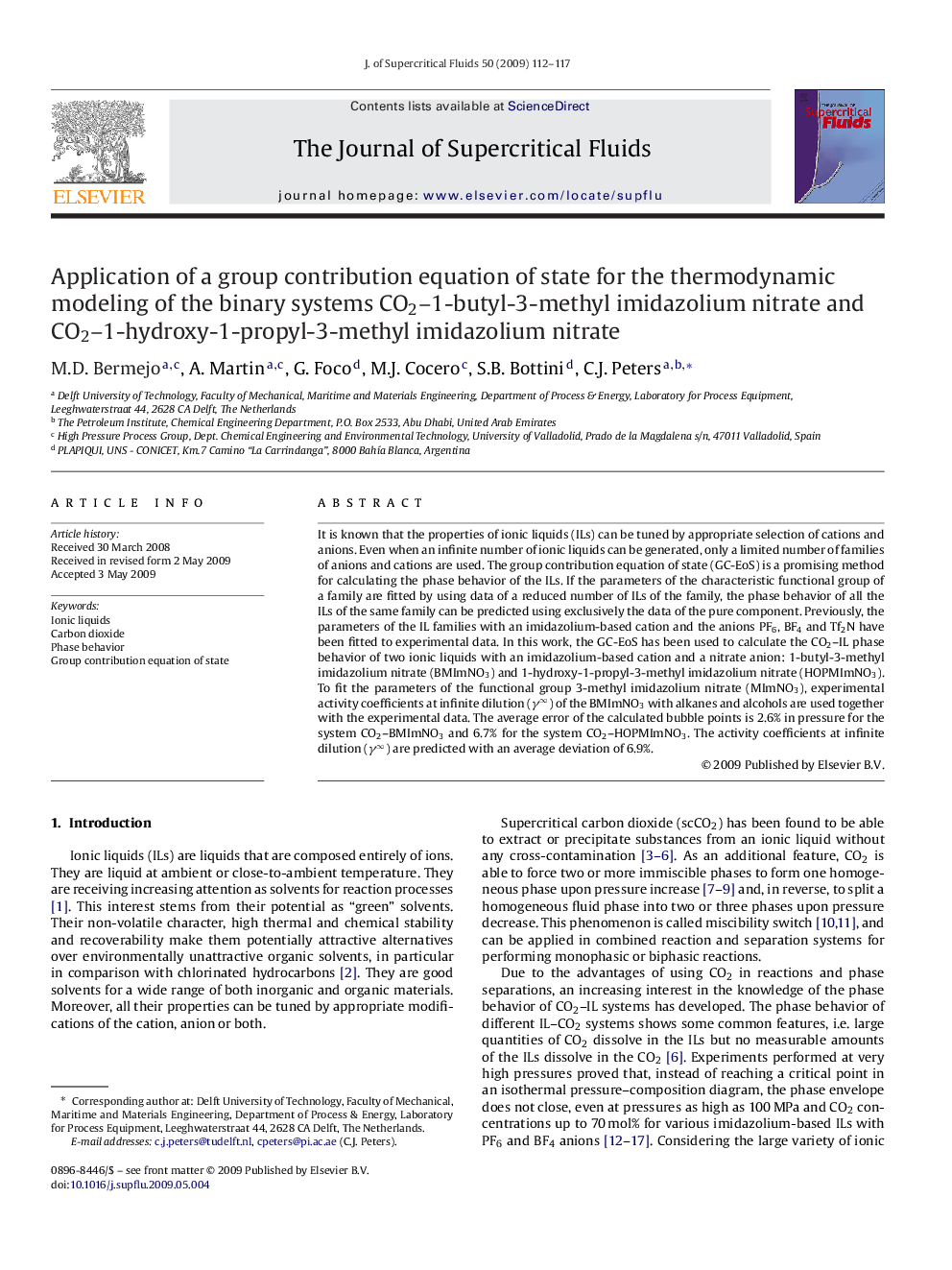| کد مقاله | کد نشریه | سال انتشار | مقاله انگلیسی | نسخه تمام متن |
|---|---|---|---|---|
| 231638 | 1427442 | 2009 | 6 صفحه PDF | دانلود رایگان |

It is known that the properties of ionic liquids (ILs) can be tuned by appropriate selection of cations and anions. Even when an infinite number of ionic liquids can be generated, only a limited number of families of anions and cations are used. The group contribution equation of state (GC-EoS) is a promising method for calculating the phase behavior of the ILs. If the parameters of the characteristic functional group of a family are fitted by using data of a reduced number of ILs of the family, the phase behavior of all the ILs of the same family can be predicted using exclusively the data of the pure component. Previously, the parameters of the IL families with an imidazolium-based cation and the anions PF6, BF4 and Tf2N have been fitted to experimental data. In this work, the GC-EoS has been used to calculate the CO2–IL phase behavior of two ionic liquids with an imidazolium-based cation and a nitrate anion: 1-butyl-3-methyl imidazolium nitrate (BMImNO3) and 1-hydroxy-1-propyl-3-methyl imidazolium nitrate (HOPMImNO3). To fit the parameters of the functional group 3-methyl imidazolium nitrate (MImNO3), experimental activity coefficients at infinite dilution (γ∞) of the BMImNO3 with alkanes and alcohols are used together with the experimental data. The average error of the calculated bubble points is 2.6% in pressure for the system CO2–BMImNO3 and 6.7% for the system CO2–HOPMImNO3. The activity coefficients at infinite dilution (γ∞) are predicted with an average deviation of 6.9%.
Figure optionsDownload as PowerPoint slide
Journal: The Journal of Supercritical Fluids - Volume 50, Issue 2, September 2009, Pages 112–117